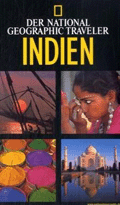Anzeige




|
Nasiyan Mandir, Roter Tempel, Ajmer Jain Temple, oder Soniji Ki Nasiyan
Ajmer Jain Temple, also known as Soniji Ki Nasiyan, is an architecturally rich Jain temple. It was built in the late nineteenth century. The main chamber, known as the Swarna Nagari "City of Gold", has several gold-plated wooden figures, depicting several figures in the Jain religion.
Genießen Sie weitere Impressionen
Kurt Titze, in his book, "Jainism: A Pictorial Guide to the Religion of Non-Violence" (1998, p. 143), writes on Soniji Ki Nasiyan:
- "Ajmer's main attraction is - for the Jainas - the prominently situated Nasiayan Digambara Temple, or rather the two-storied Svarana Nagara Hall behind the temple, better known as the Museum. Both the temple and the museum were built and are still owned by the Sony family of Ajmer. The temple, dedicated to Rishabha or Adinatha in 1865, was constructed of red sandstone in a matter of a few years, but it took twenty-five years, from 1870 to 1895, to fashion - by artisans at Jaipur - the thousands of individual parts required to assemble a three dimensional replica of the story of Rishabha in accordance with an old manuscript by Acharya Jinasena.
- The thought to have such a three dimensional model for eduational purposes occurred to Seth Moolchand Soni, who was born in 1830, only after the completion of the temple. His death in 1891 prevented him from seeing his ambitious work in ist finished state.
- In many Jaina temples one sees painted or figurative representations of the 'five auspicious events' (pancha-kalyanak) in the life of every Tirthankara: conception, birth, renunciation, enlightenment, and salvation (moksha or nirvana). The one at Ajmer, now over a hundred years old, is by far the largest and most artistic plastic representation of that much-loved mythological narrative. A specially designed hall of 24.3 m by 12.2 m had to be build to display it effectively. It is open to visitors of all religions every day all the year round for a very small entry fee."
©: Texte (und Bilder) mit freundlicher Genehmigung von Wikipedia/Wikivoyage - GNU-Lizenz für freie Dokumentation,
|
Anzeigen
|
|
|
© 2012 Traumpfade der Welt - Ihr kostenloser Urlaubs-Planer
kostenlose Reisebeschreibungen, Reiseinformationen, Reisetipps zu Städten, Sehenswürdigkeiten, Museen, Schlösser, Burgen, historischen und interessanten Gebäuden, Kirchen, Landschaften, Hotels und Restaurants
|
|








